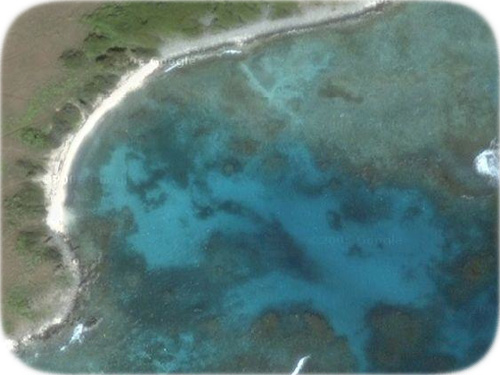Scouting Locations
Almost any body of water will do, provided there are at least parts which are extremely shallow. Tropical beaches can be great places for Extreme Shallow Snorkeling, but Marc AuMarc once found four species of fish and a golf ball while circumnavigating a tiny pond in Vermont.
Typically, you will need some sort of access. Public beaches work very well. Docks and piers can be good entry points if they are low above the water. In freshwater situations, an accessible bank is the ideal launching point.
In tropical areas, where we are most experienced, you may also want to look for bays that are protected from strong surf, and visible coral under the surface of the water. If we are at a beach sunbathing or relaxing, we typically also survey the water to identify areas for further exploration. It may even be possible to identify promising sites while driving if the road is close to the water.
Now, we are also able to use the internet and advanced satellite imaging to identify promising sites from the comfort of the home or hotel room. Below is a map of the E.S.S. site on the back side of Pinel Island in St. Martin. As you can see, the beach is located in a protected bay that is clearly quite shallow. On either side are coral formations (the darker colored areas). Without even visiting, we can tell that this is a highly promising site that is likely to be relatively calm and safe. In fact, it is a great site, with an abundance of life.

Tip: When in doubt, try it out! Since you don’t need much gear or to swim far from the shore, it’s easy and fast to test an unknown site.
